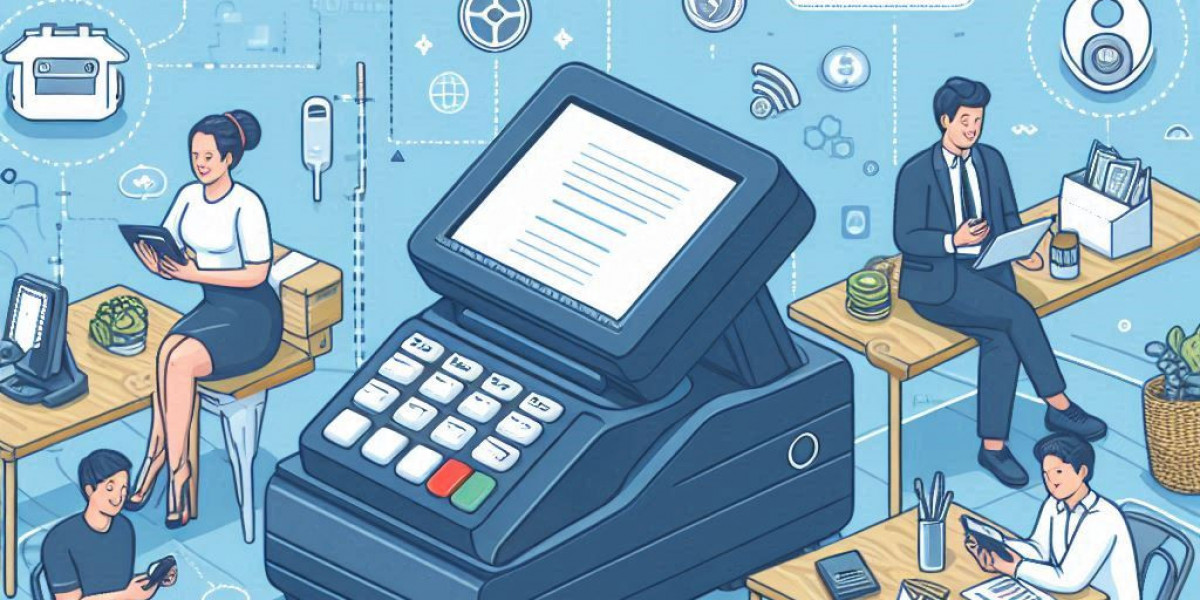The retail industry is undergoing a major transformation, driven by the increasing demand for speed, convenience, and security in payment processing. Contactless payments—including tap-and-go credit/debit cards, mobile wallets, and QR code payments—are becoming the preferred method for transactions.
For retailers, adapting to this change is no longer optional. The ability to accept fast, secure, and touch-free payments is now a critical factor in customer satisfaction and business growth. This article explores how the rise of contactless payments is shaping the industry and whether your retail POS system is prepared for the shift.
1. Understanding Contactless Payments
Contactless payments allow customers to complete transactions without physically swiping or inserting a card into a terminal. Instead, they use Near Field Communication (NFC) or QR codes to make quick and secure payments.
Types of Contactless Payments
NFC-Enabled Cards – Debit and credit cards equipped with an NFC chip allow users to simply tap their card on a payment terminal.
Mobile Wallets – Apple Pay, Google Pay, and Samsung Pay store card details digitally, allowing payments via smartphone or smartwatch.
QR Code Payments – Customers scan a retailer’s QR code to complete transactions through apps like PayPal, Venmo, and WeChat Pay.
Wearable Payments – Smartwatches and other wearables can be linked to bank accounts for instant payments.
With more consumers adopting cashless transactions, businesses must ensure their POS systems for retail stores support these new payment methods.
2. Why Are Contactless Payments Gaining Popularity?
Several factors have contributed to the rapid adoption of contactless transactions:
a. Speed and Convenience
Contactless payments reduce checkout time by eliminating PIN entry or cash handling.
Faster transactions improve customer flow, reducing long queues.
b. Enhanced Security
Tokenization and encryption protect customer data, reducing fraud risks.
Contactless payments eliminate card skimming and other forms of fraud associated with swiping magnetic strips.
c. Health and Hygiene Considerations
The COVID-19 pandemic increased demand for touch-free payment methods to reduce the spread of germs.
Many businesses prioritized digital payments to enhance customer safety.
d. Growing Consumer Preference
Younger consumers, particularly Millennials and Gen Z, prefer digital payments over cash.
Retailers that support mobile wallets and NFC payments appeal to tech-savvy shoppers.
e. Increased Global Acceptance
Governments and financial institutions are encouraging a cashless economy to improve efficiency and reduce reliance on physical currency.
Countries like Sweden, China, and the UK are leading the shift to contactless-first retail environments.
Retailers who fail to upgrade their POS system may risk losing customers to competitors who offer faster and more secure payment options.
3. How to Ensure Your Retail POS System Is Ready for Contactless Payments
a. Upgrade to an NFC-Enabled POS System
A modern retail POS system should support NFC technology for contactless card payments.
Verify if your existing point-of-sale terminal is NFC-compatible or if it needs an upgrade.
b. Integrate Mobile Wallet Payment Options
Enable Apple Pay, Google Pay, and Samsung Pay to cater to smartphone users.
Ensure compatibility across multiple mobile payment platforms.
c. Adopt Cloud-Based POS Solutions
A cloud-based retail POS system allows for real-time transaction updates and remote management.
Businesses with multiple locations can sync payment data seamlessly across all stores.
d. Ensure Compliance with Security Standards
Implement PCI-DSS compliance to protect customer payment data.
Use EMV chip technology alongside NFC for added fraud protection.
e. Provide a Seamless Customer Experience
Train staff to educate customers on using contactless payment options.
Offer rewards or incentives for customers who switch to cashless transactions.
4. Challenges of Contactless Payments and How to Overcome Them
a. Limited Customer Awareness
Solution:
Promote contactless payment availability through in-store signage and digital marketing.
Train cashiers to assist first-time users with the process.
b. High Processing Fees
Solution:
Compare merchant service providers to find cost-effective transaction fees.
Encourage higher-value purchases to balance processing costs.
c. Technical Issues and Compatibility
Solution:
Regularly update POS software to prevent glitches.
Choose a reliable payment processor with 24/7 support.
d. Concerns About Security Risks
Solution:
Use multi-layered encryption to protect transactions.
Implement AI-driven fraud detection in your POS system.
5. The Future of Contactless Payments in Retail
The evolution of contactless payments is reshaping how retailers operate. Some emerging trends include:
Biometric Payments – Facial recognition and fingerprint authentication will replace PINs.
AI-Powered POS Systems – AI will predict customer preferences, enabling personalized payment experiences.
Cryptocurrency Integration – More retail POS systems will accept Bitcoin and digital currencies.
Augmented Reality (AR) Shopping – Customers will use AR-enabled wallets for immersive digital transactions.
Retailers who invest in next-generation POS systems will be better positioned to meet the future demands of digital commerce.
Conclusion
As contactless payments continue to rise, retailers must ensure their POS systems for retail stores are fully equipped to handle fast, secure, and digital transactions. Upgrading to an NFC-enabled retail POS system provides benefits such as faster checkout, enhanced security, and improved customer experience.
Businesses that embrace contactless technology will gain a competitive edge, while those that resist change risk losing customers. The future of retail is cashless, digital, and frictionless—is your POS system ready?









